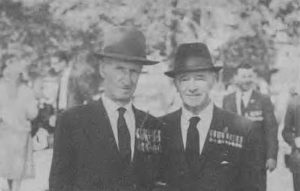At the start of the Boer War, 1899, the enemy use of large calibre guns, able to outrange the British field artillery, forced retreat after retreat, until within three weeks, ...
Boer War
Twins Were Pioneers of the RAN
An announcement that two brothers had been appointed to command sister ships in Australia’s Destroyer Squadron has brought to light the careers of twin brothers who were pioneers of the ...
Australian Naval History on 30 October 1900
The Naval Brigade of HMS POWERFUL, (a previous flagship of the Australia Station), attacked Boer positions at Lombards Kop, Ladysmith, South Africa. ...
